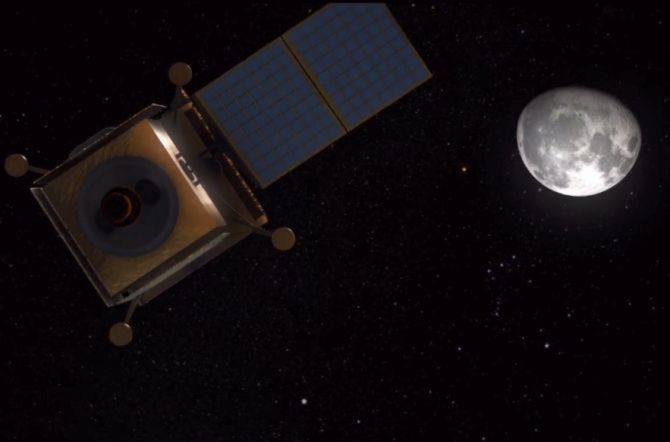India’s Chandrayaan-2 orbiter, which has been orbiting the Moon since August 2019, has for the first time mapped the abundance of sodium on the Moon. According to the Indian Space Research Organisation, the X-ray spectrometer ‘CLASS’ on the Chandrayaan-2 orbiter has mapped an abundance of sodium on the moon for the first time, according to the Indian Space Research Organisation.
The National Space Agency said in a recent work published in The Astrophysical Journal Letters that Chandrayaan-2 mapped the abundance of sodium on the Moon for the very first time using CLASS (Chandrayaan-2 Large Area Soft X-ray Spectrometer), adding, “Built at the U. R. Rao Satellite Centre of ISRO in Bengaluru, CLASS provides clean signatures of the sodium line thanks to its high sensitivity and performance.”
According to the study’s findings, a portion of the signal could be caused by a thin layer of sodium atoms that are weakly bound to the lunar grains. These sodium atoms can be nudged out of the surface by solar wind or ultraviolet radiation more easily than if they were part of the lunar minerals. Also shown is a diurnal variation of the surface sodium that would explain the continuous supply of atoms to the exosphere, sustaining it.
Interestingly, an aspect that widens the interest in this alkali element is its presence in the wispy atmosphere of the moon, a region so thin that the atoms there rarely meet. This region, termed an “exosphere”, begins at the surface of the moon and extends several thousand kilometers into interplanetary space.
ISRO said, “The new findings from Chandrayaan-2 provide an avenue to study surface-exosphere interaction on the moon, which would aid the development of similar models for mercury and other airless bodies in our solar system and beyond.”
According to ISRO, the radiance that fills the vast expanse of the night sky is the reflection of sunlight from the moon’s surface, a major part of which is from the bright lunar highlands. The rock and soil samples that the Apollo 11 astronauts brought back to Earth showed that the regions on the lunar surface, which are remnants of the ancient lunar crust, are mainly composed of silicate minerals, including sodium.
Also Read: Bird Hit At Ahmedabad Airport: Pigeon Racing, Untamed Problem For Authorities












